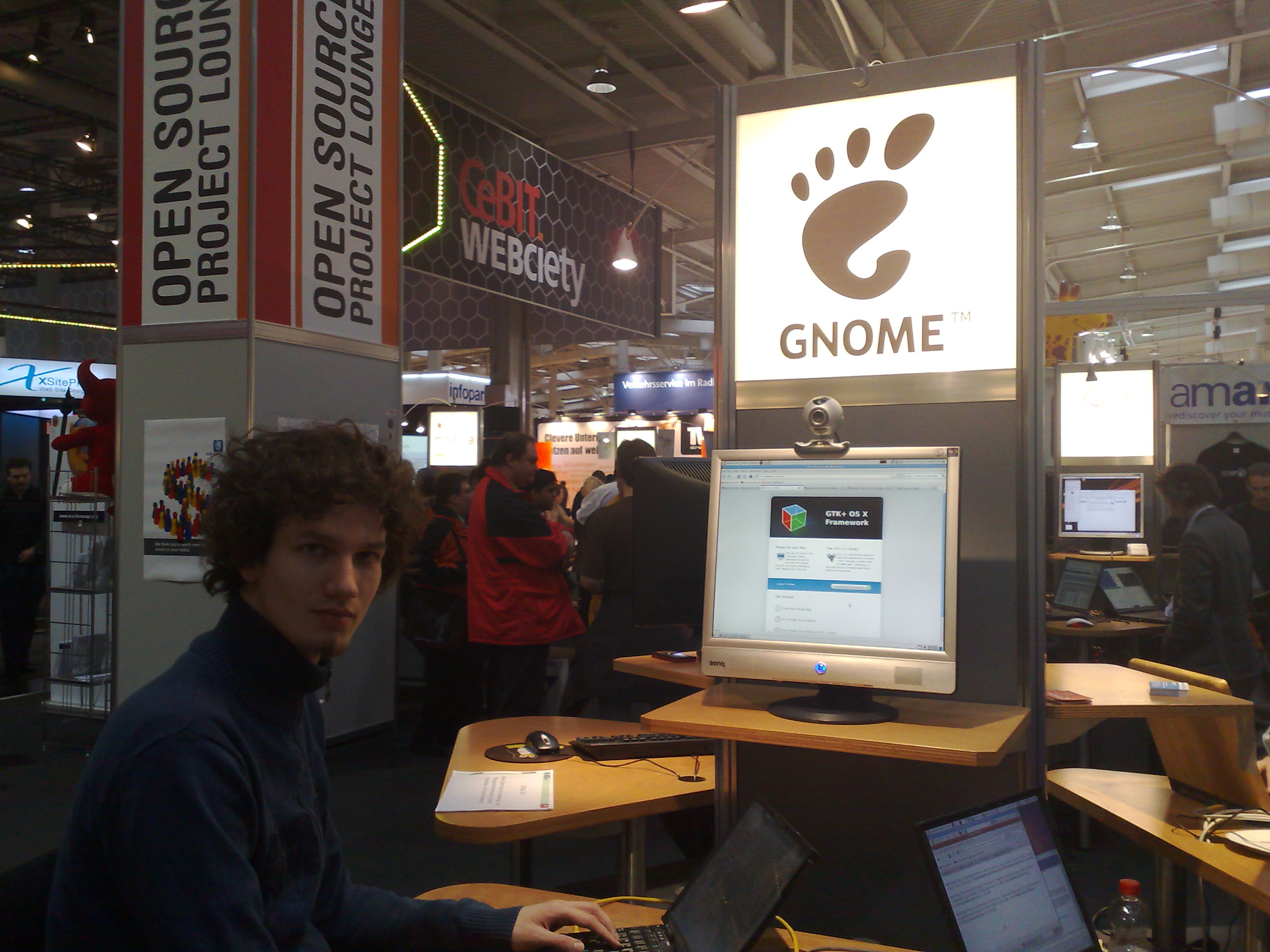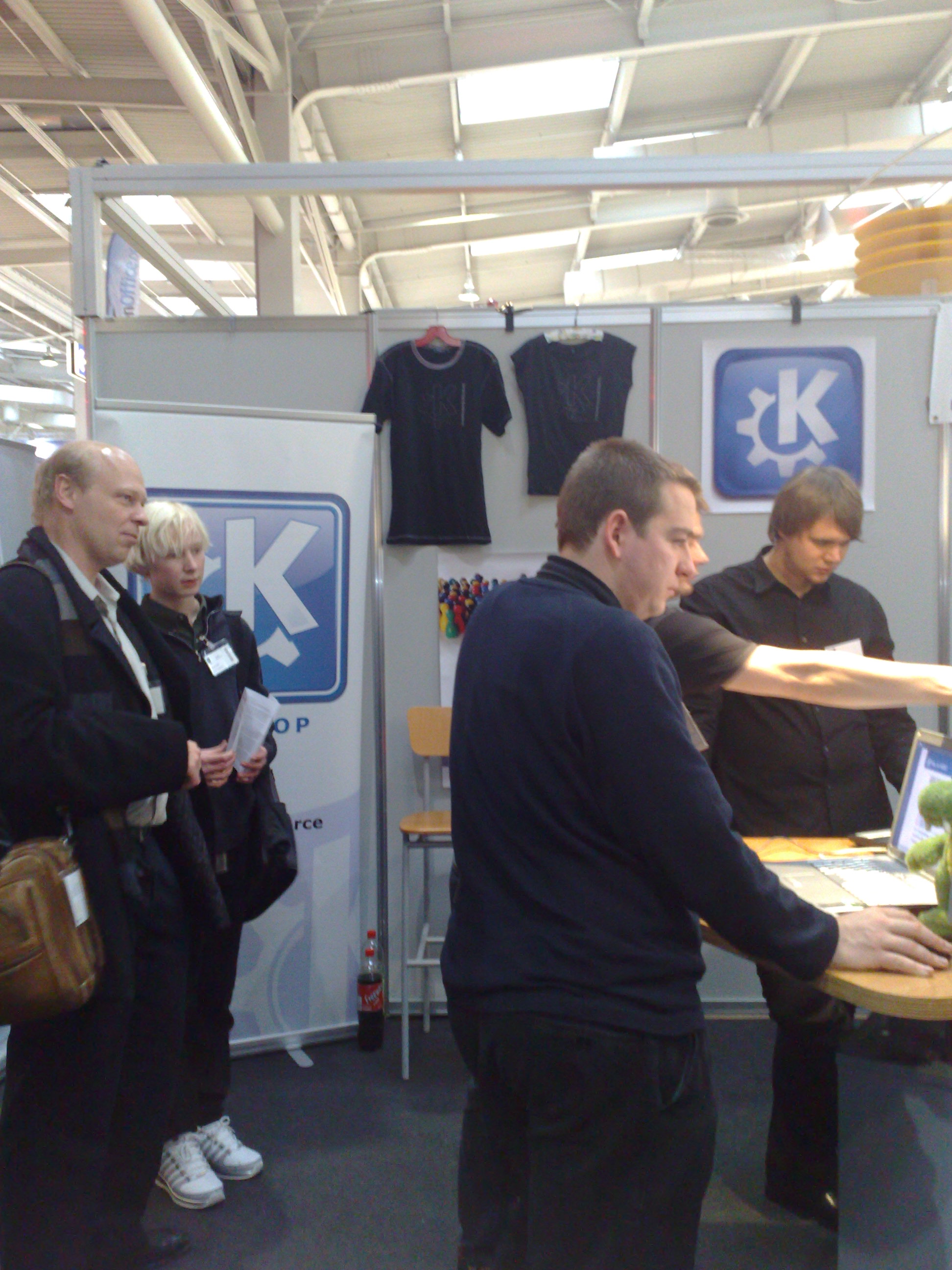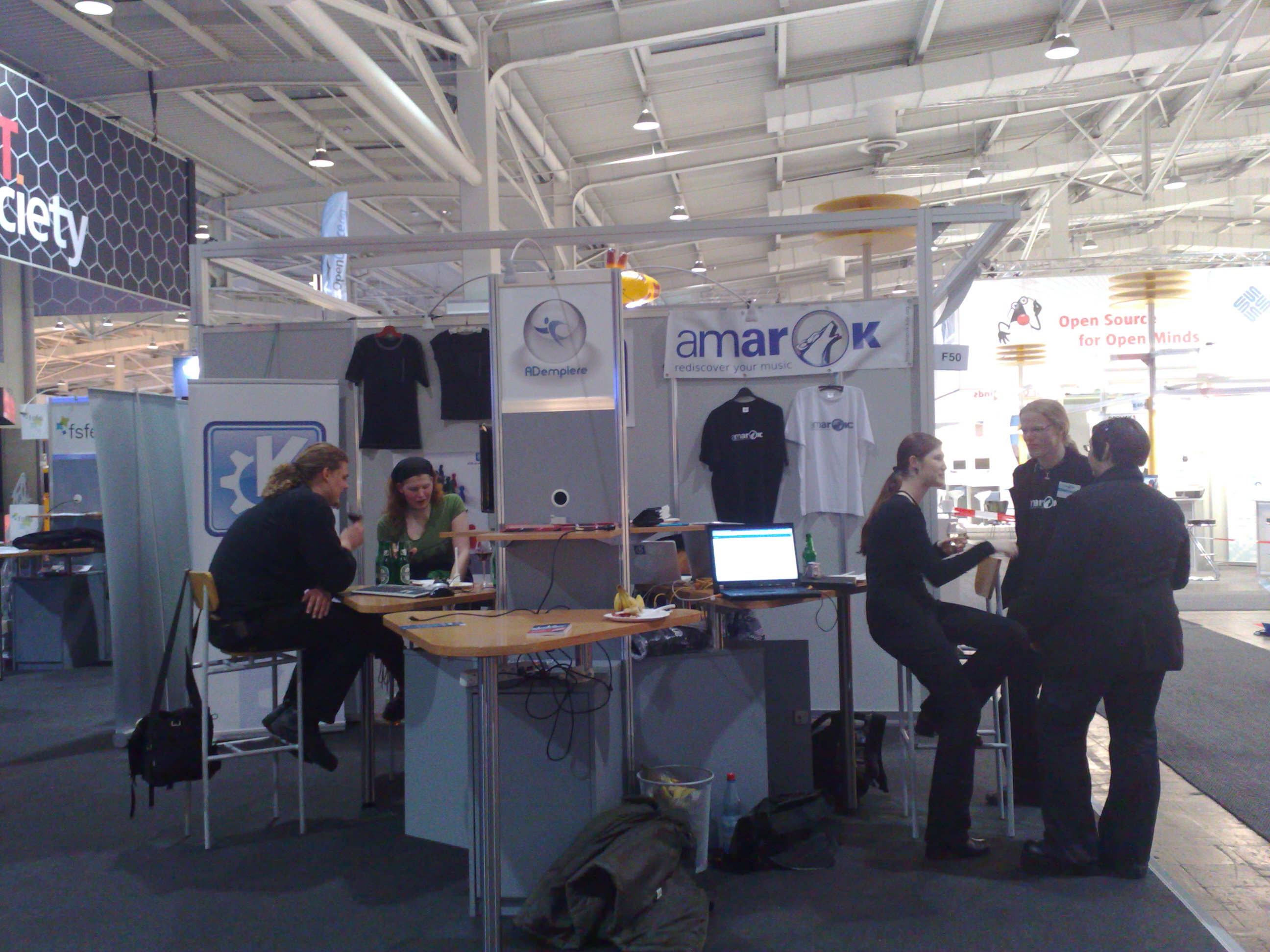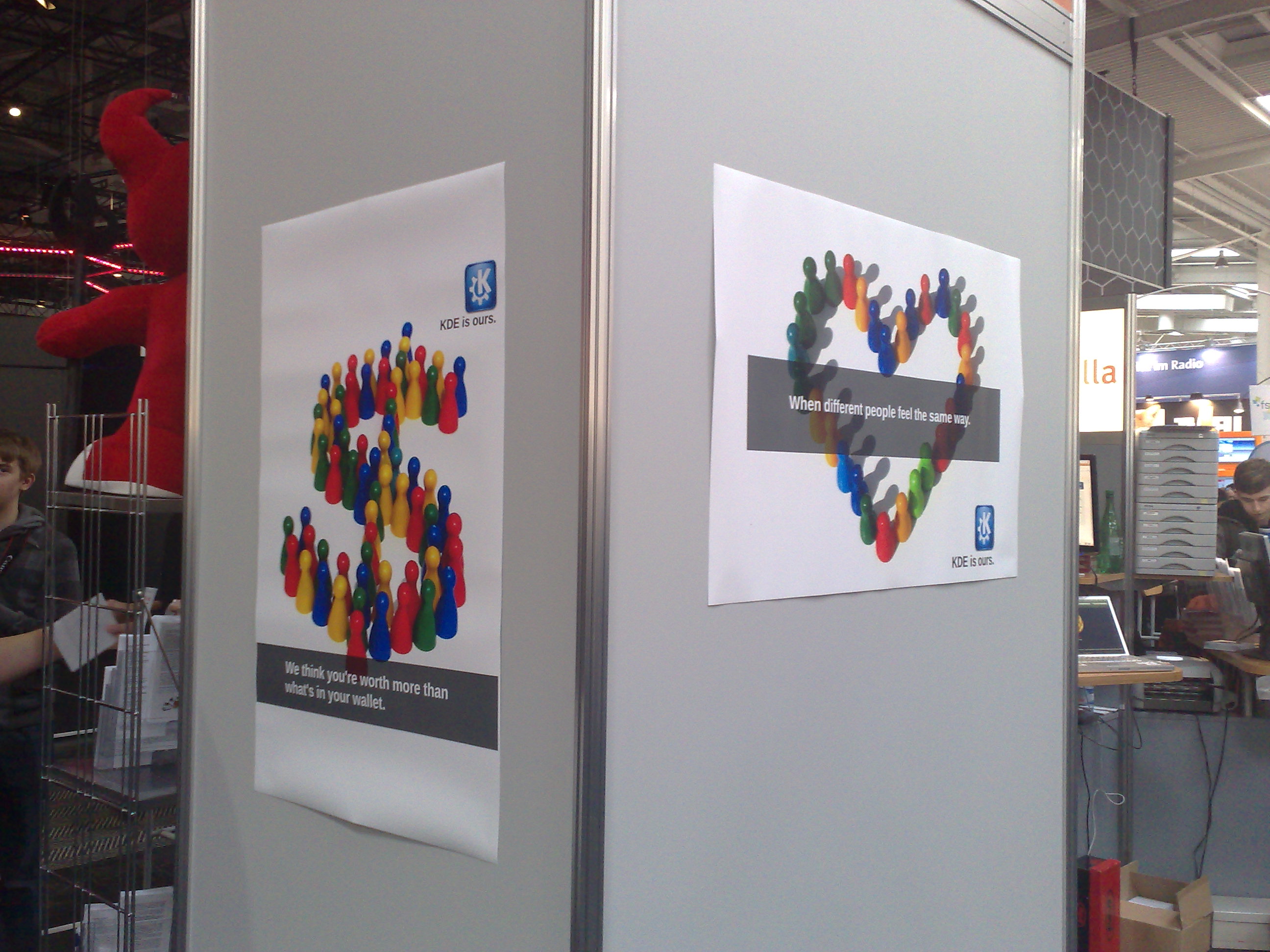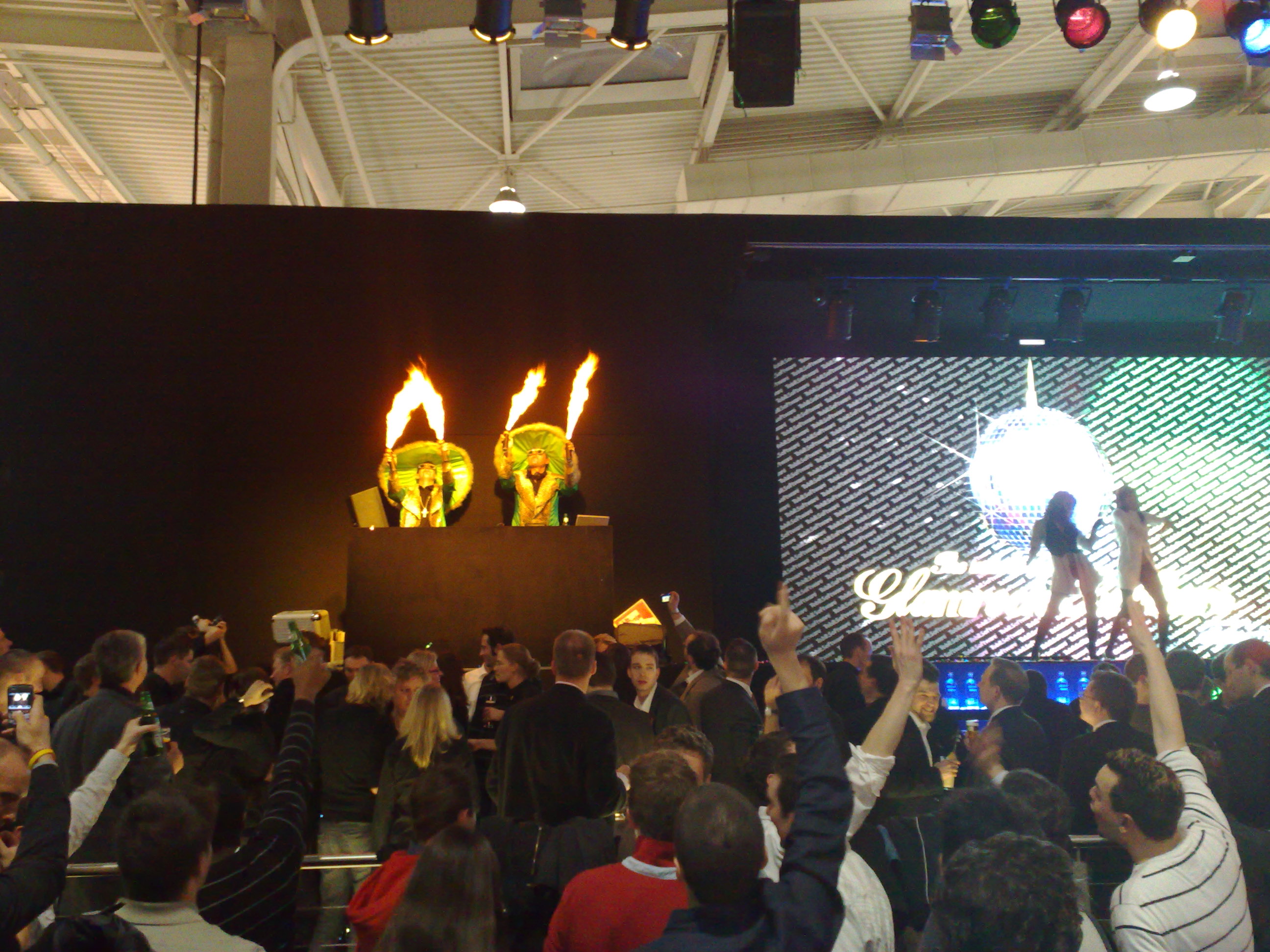The GCDS has just finished and I think it was a great and successful conference. It was the first joint aKademy + GUADEC conference and I feel it turned out quite well. We could have had more explicit collaboration or more attention on the “other” talks, but I think the people have to get used to the fact that there are people with different approaches who you can talk to. Let’s hope it’ll be a joint convention next year as well (I always wanted to spend a week or two in Finland…).
The registration process was a bit weird, because the organizers wanted to know private data without even trying to make clear what they are used for. In fact, the only thing I could see (even from a retro perspective) is to collect the data. As I’ve stated in a mail buried in this thread, I don’t really like that for several reasons and I hope that the next organization committee will not collect absolutely necessary data.
The first day began with a RMS keynote for me. I expected it to be really bad because for some reason the people say that RMS’ talks are boring, stubborn and repetitive. I’ve never heard a RMS talk before and I couldn’t apply any of these critics onto his talk. In fact, I really liked and enjoyed it, although it was not necessarily pleasant to listen because he disagrees with our decisions: He doesn’t like to see new applications to be written in C# because the Software Freedom Law Center doesn’t think that the Community Promise guarantees that Microsoft will not charge patent fees. I am not into that topic but I believe that the SFLC does a good job. And I also trust the SFLC more than I trust Microsoft. So it’s not about patents in general (which should be abolished anyway) but rather about not putting too many weight onto our Desktop so that we can get rid of C# apps easily in case of fire^W ugly patent stuff. And I don’t know what’s not clear about that: As the risk seems to be there and we want to have a free desktop in the future, we have to watch out now to not fall into a Bitkeeper trap.
I also don’t agree with travis or lefty who think the reference to an EMACS virgin is sexist or mixing different topics (software freedom and religion in this case) is unhealthy. RMS clearly referred to the Christian church and it’s habits, so if there is anything bad, it’s to be search in these circles. Also, virtually everyone has cheered after RMS’ performance. And I wouldn’t go that far and call all the audience sexist. Actually, I dislike the idea of (computer) engineers answering sociologists questions for the same reason I don’t ask a sociologist in case of computer trouble (I like it, when they think, talk and discuss about it though). From an intersectional point of view, I’d ask whether the strong focus on women is actually sexist, because there is clearly more than one domain we have minorities in. Take Blacks, Jews, Disabled or Queers or people with an inside out belly button for example. By constantly reciting that women are a minority, we could actually harden this situation instead of making it disappear. I could actually write a paper about it, as I need one for university anyway to finish my Gender Studies.
The parties were all awesome, thanks to Canonical, Nokia, Igalia and Collabora who really know how to throw a good party. I wonder why Google didn’t show up though.
I also have to thank the GNOME foundation for sponsoring my trip to Gran Canaria! It’s really good to see that my contributions are valued and that I can improve them by attending various talks and sessions. This year was especially useful because we could attend the KDE peoples sessions. I especially enjoyed being at the KDE bugsquad sessions to share and improve ideas.

Although I took some photos, I won’t upload them to flicker, but the people seem to tag their photos with “gcds” or “guadec”. I have looked through a couple of them and they seem to be all good. But I couldn’t make it through all of them as there are way too many.
Two major drawbacks were the relocation of the conference and the Internet connectivity during the event: We moved from the rather central Alfredo Kraus Auditorium to the suburban University on the fourth day or so. That was inconvenient because it took ages to get there. The Internet thing is totally unrelated to the organizers, but left a bad taste anyway. The uplink was totally broken with a packet loss with up to 75% in “So6-0-0-0-grtmadno1.red.telefonica-wholesale.net”.
I’m looking forward to next years GUADEC or maybe “TDS”… 🙂
